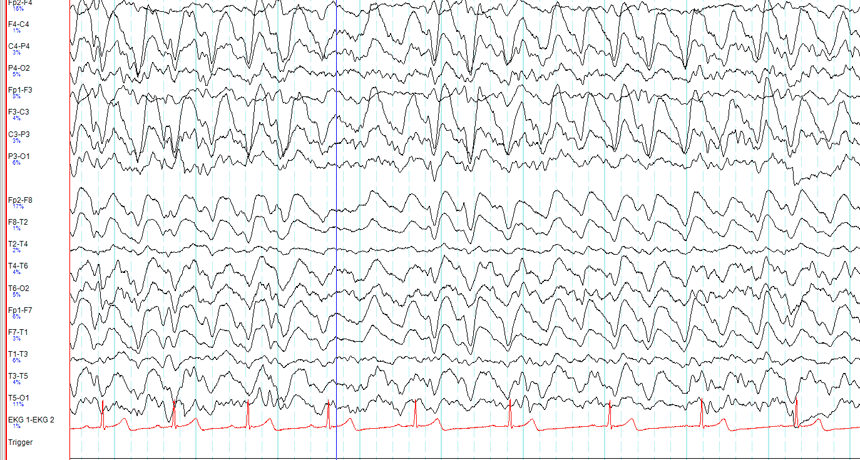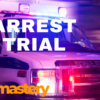There has been a longstanding discussion over which is the best second-line agent to use in paediatric seizures and more specifically in convulsive status epilepticus. We now have two trials that have tried to answer this question by comparing Phenytoin and Levetiracetam: The EcLIPSE(1) and ConSEPT(2) trials.
Phenytoin and Levetiracetam: EcLIPSE and ConSEPT-The Bottom Line
There was no statistical significance between the two drugs in terms of the endpoints of seizure termination used in these trials. Given the lack of significant difference and the side effect profiles of the two medications, it may be that Levetiracetam is the drug of choice.
Background
Convulsive status epilepticus is the most common paediatric neurological life threatening emergency, with mortality approaching 5% and a significant number of children having long term sequelae from prolonged seizures(3,4). The aetiology of paediatric seizures include prolonged febrile convulsions, CNS infections or metabolic derangements(5).
We know that most seizures resolve well within 5 minutes. Those that do not, require treatment for termination. The international League Against Epilepsy(ILAE), proposed a recent new definition and classification of status epilepticus based on the time duration of the seizures(6).
They describe two time points in a seizure:
- 5 minutes: this is the time beyond which the seizure will be regarded as ‘continuous seizure activity’
- 30 minutes: this is the point past which there is a risk of long term consequences
Guidelines prescribe the use of benzodiazepines as a first line treatment. probably the most common being Midazolam. But what do we use as second line treatment? This is what these trials tried to answer. They were powered to give a result.
The EcLIPSE and ConSEPT trials
EcLIPSE(1)
- n=296
- Age 6 months -18 years
- Randomised Control Trial, multi centre
- Compared Phenytoin 20mg/kg given over 20 minutes and Levetiracetam 40mg/kg given over 5 minutes
Primary Outcome
- The primary outcome was “time from randomisation to cessation of convulsive status epilepticus”
Results
- Phenytoin : 45 minutes
- Levetiracetam: 35 minutes
The results were not statistically significant.
ConSEPT(2)
- n=233
- Age 3 months -16 years
- Randomised Control Trial, multi centre
- Compared Phenytoin 20mg/kg given over 20 minutes and Levetiracetam 40mg/kg given over 5 minutes
Primary Outcome
- The primary outcome was “clinical cessation of seizure activity five minutes following the completion of the infusion of the study medication”.
Results
- Phenytoin : 60%
- Levetiracetam: 50%
The results were not statistically significant.
Phenytoin and Levetiracetam
Phenytoin
- Promotes Na+ efflux in motor cortex neurons and slows conduction velocity.
- The IV loading dose in seizures is 15-20 mg/kg at 25-50 mg/min.
- The infusion rate should not exceed 50mg/min in all patients, or 1-3 mg/kg/min in paediatric patients(whichever is less) as there is a risk of hypotension and arrhythmias.
- Contraindications include any hypersensitivity to the medication, sinus bradycardia or heart blocks.
Levetiracetam
- Antiepileptic, whose mechanism is not really known.
- Dosing varies depending on the literature, and data is limited.
- Usual recommended dose is IV loading of 20mg/kg, but ranges are given of : 20-60 mg/kg as a single dose.
- Maximum dose data also varies with ranges from 3,000 to 4500 mg used.
- Contraindications only include hypersensitivity to the drug, but nothing else. Like Phenytoin, there are cautions, but only this contraindication.
Conclusion: Phenytoin and Levetiracetam: EcLIPSE and ConSEPT
In a review of Phenytoin and Levetiracetam: the EcLIPSE and ConSEPT trials, we find no statistically significant difference between the two drugs. They tell us that Levetiracetam is as safe as Phenytoin.
For most practitioners this may not be practice changing. They will use what they are used to using. Given that the two medications work equally well, perhaps the side effect profile is the one thing that should change practice. The most significant side effect of phenytoin (and it was significant in one case in the EcLIPSE trial) is hypotension. To avoid this, as well as arrhythmias, it is advised that Phenytoin be not given any faster than 50mg/min in all comers or no faster than 3mg/kg/min in children; whichever is less. Rate of infusion errors are not uncommon and the risk of an adverse event is real.
The relative safety of Levetiracetam and its rapid rate of administration, which allows treating physicians to decide on a potential 3rd line agent prior to intubation, (appears to be common practice(9)), may make it the drug of choice.
(For more on Status, watch the video on Ketamine in Status)
References
- Lyttle MD et al. Levetiracetam versus phenytoin for second-line treatment of paediatric convulsive status epilepticus(EcLIPSE): a multi centre, open-label, randomised trial. Lancet. 2019 May 25;393(10186):2125-2134.
- Dalziel SR et al. Levetiracetam versus phenytoin for second-line treatment of convulsive status epilepticus in children(ConSEPT):an open-label, multi centre, randomised controlled trial.Lancet 2019 May 25;393(10186):2135-2145
- Novorol CL et al. Outcome of convulsive status epilepticus: a review. Arch Dis Child 2007;92:948-51
- Raspall-Chaure M et al. Outcome of paediatric convulsive status epilepticus: a systematic review. Lancet Neurol 2006;5:769-79
- Chin RF et al. Incidence, cause and short-term outcomes of convulsive status epilepticus in childhood:prospective population-based study. Lancet 2006;368(9531)222-9
- Trinka E et al. A definition and classification of status epileptics-Report of the ILAE Task Force on classification of status epilepticus. Epilepsia 2015;4 September, Vol 56 issue 10pp 1515-1523
- Lyttle MD et al. Levetiracetam versus phenytoin for second-line treatment of paediatric convulsive status epilepticus(EcLIPSE): a multi centre, open-label, randomised trial. Lancet. 2019 May 25;393(10186):2125-2134.
- Dalziel SR et al. Levetiracetam versus phenytoin for second-line treatment of convulsive status epilepticus in children(ConSEPT):an open-label, multi centre, randomised controlled trial.Lancet 2019 May 25;393(10186):2135-2145
- Babl F et al. Emergency management of paediatric status epilepticus in Australia and New Zealand: practice patterns in the context of clinical practice guidelines. J Paediatr Child Health. 2009;45(9):541–6.











I have been exploring for a bit for any high-quality articles or weblog posts on this kind of house .
Exploring in Yahoo I at last stumbled upon this web site.
Reading this information So i am glad to convey that I
have an incredibly just right uncanny feeling I came upon just
what I needed. I so much unquestionably will make sure to don?t omit this web site and give it a look on a relentless basis.
I believe that is among the such a lot vital info for me.
And i am happy reading your article. However want to observation on some common issues, The website style
is great, the articles is truly nice : D. Good activity,
cheers
Nice answer back in return of this question with solid arguments and
describing everything regarding that.
I visited several web pages but the audio feature for audio songs current at this site is in fact wonderful.